A 6.4 magnitude earthquake struck in Humboldt County, leaving tens of thousands without power and dozens of residents displaced from their homes. There were several injuries and at least two deaths reported from medical emergencies following the strong temblor.
Here's a look at how strong the temblor hit, where it was felt and a breakdown of why the area is known for large events.
How strong was the Northern California earthquake?
Tuesday morning's Northern California earthquake was strong enough to hit a shaking intensity of VIII on the Modified Mercalli Intensity Scale. This shaking is "severe" where it becomes difficult to stand and capable of producing moderate to heavy damage even for more recently built structures.
Get a weekly recap of the latest San Francisco Bay Area housing news. Sign up for NBC Bay Area’s Housing Deconstructed newsletter.
Areas in this "severe" zone are show in the images below with "noticeable" shaking felt through Central Oregon to the north and to near Monterey Bay to the south.
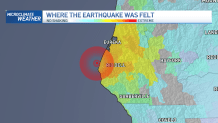
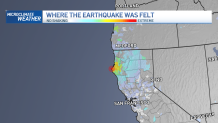
What to know about the Mendocino Triple Junction
The Mendocino Triple Junction is where the West Coast’s more intense/damaging fault systems meet at the convergence of the North American, Pacific and Gorda (and Juan De Fuca) plates.
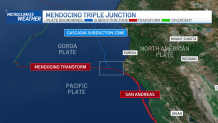
It's worth noting you have the San Andreas coming up from the south – and the Cascadia subduction zone to the north – this is the highest risk for catastrophic tsunami events as subduction zones create the world’s largest earthquakes (Japan, Sumatra, etc.) and capable of 9.0 and break for extremely long distances.
The grouping of transform and divergent (pulling apart) boundaries are there as well capable of producing 6.0s and 7.0s on their own. Collectively, they team together to create consistently strong earthquakes.
Here's a look at other large earthquakes since 1980
The graphic below breaks down some of the larger earthquakes since 1980.
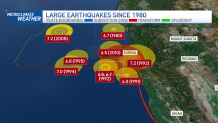
Strong Northern California earthquakes strike on Dec. 20 past two years
The Northern California area where Tuesday's 6.4 magnitude earthquake is about 12 miles away from a 6.2 magnitude earthquake near Petrolia that struck on Dec. 20, 2021.
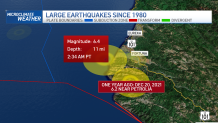
The area is a known repeat offender for large events and long aftershock sequences, which is why the Berkeley Seismological Lab is adding more sensors and stations to get better data on the fault systems.



